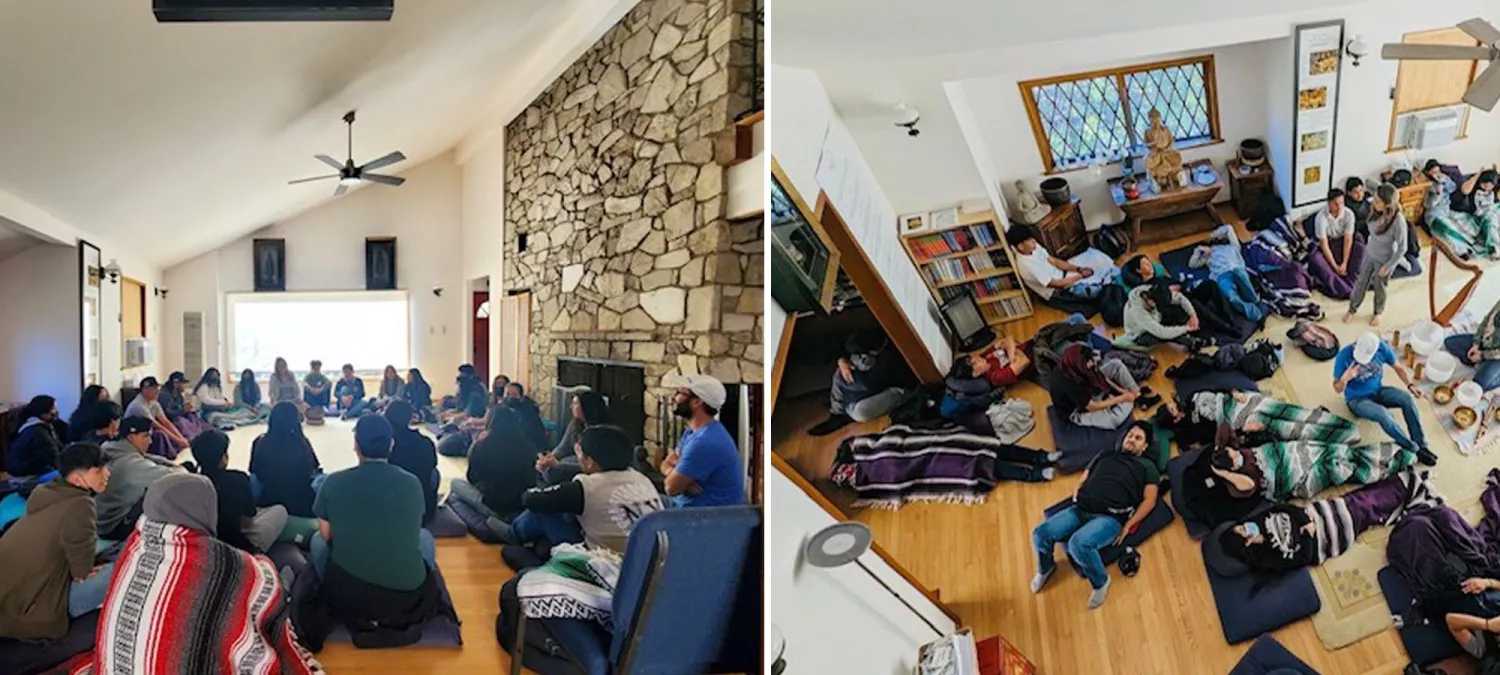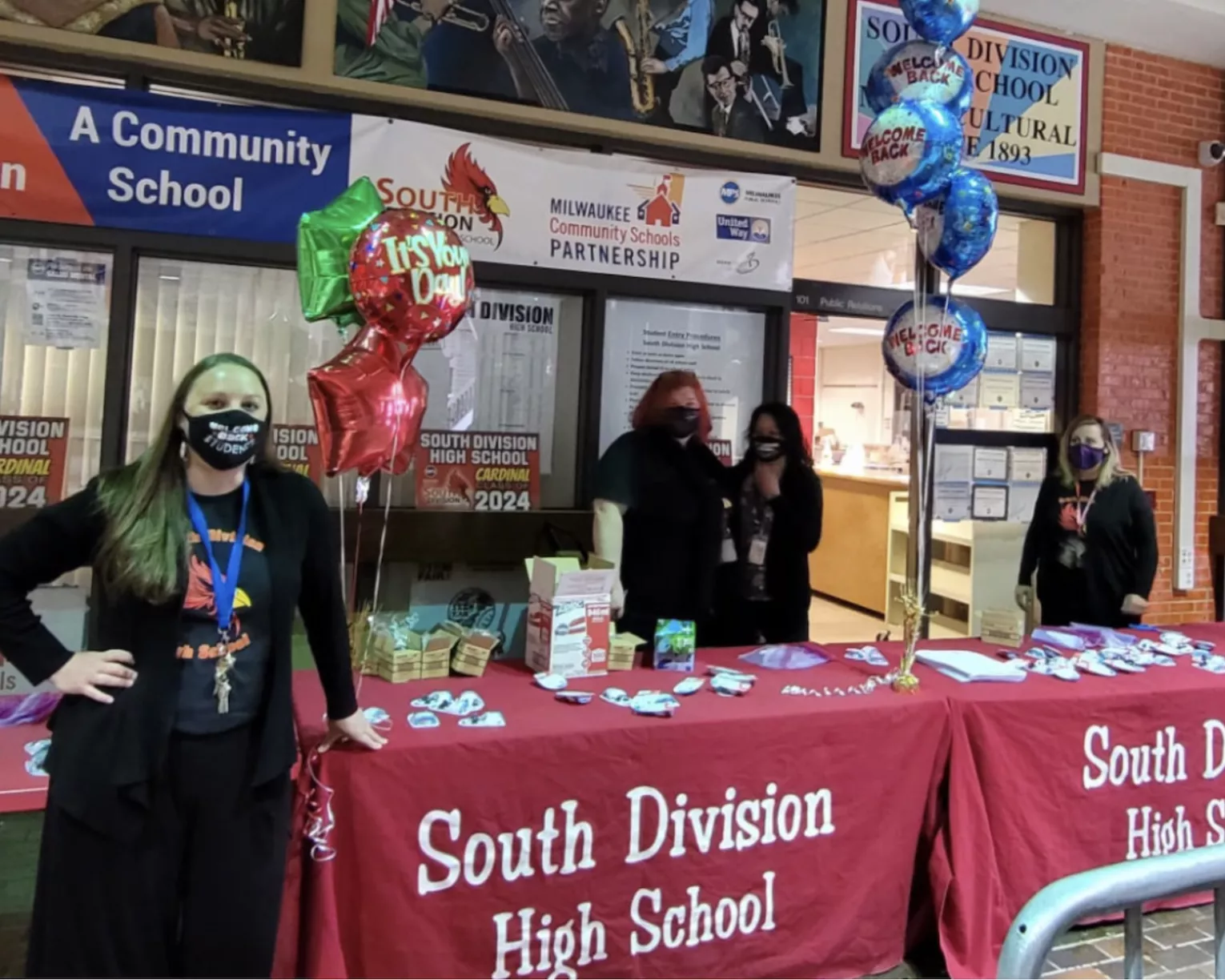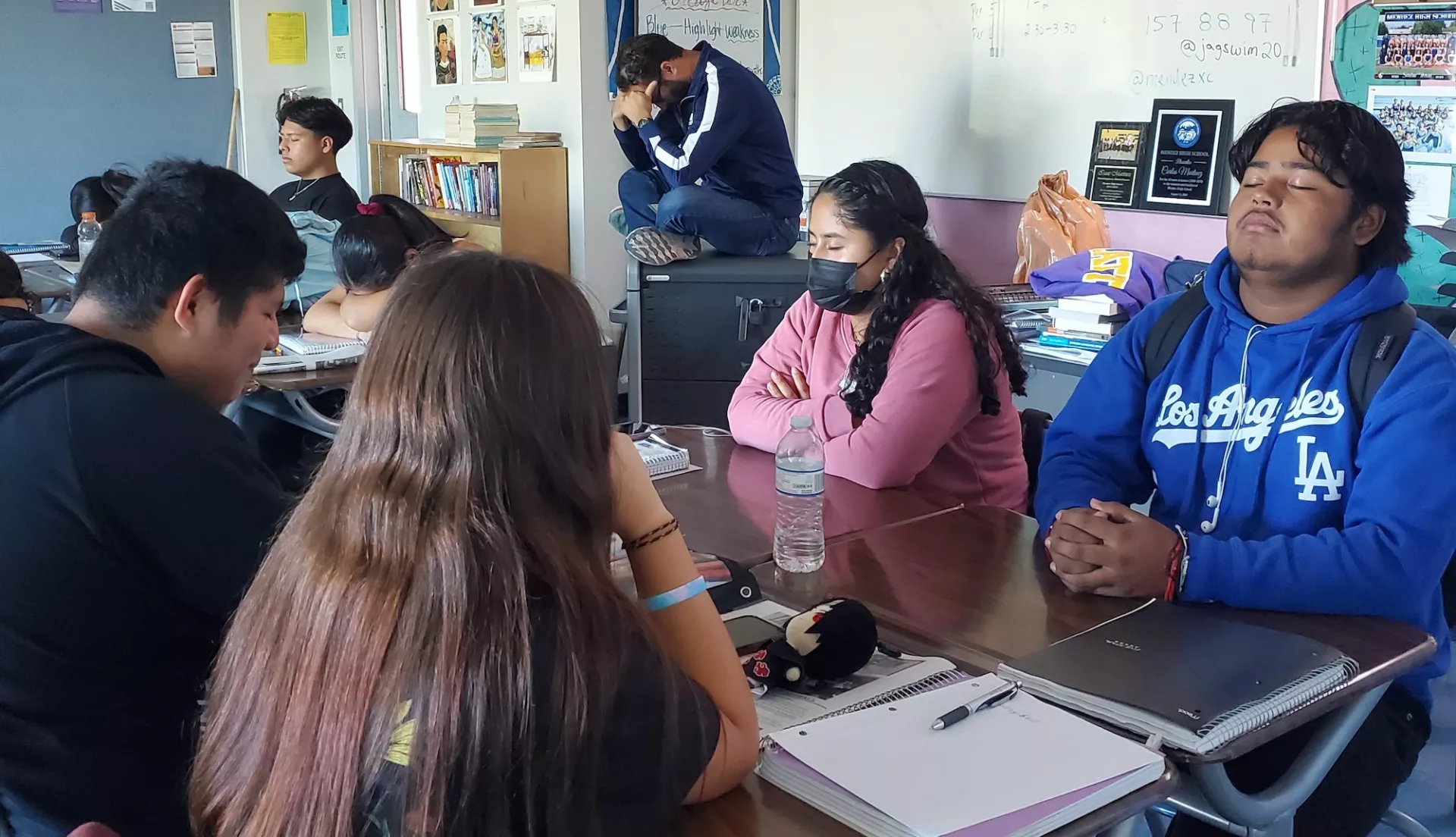Key Takeaways
- Newcomer students often arrive in the country on their own and have experienced trauma.
- Mindfulness is a proven strategy to help ease stress and trauma.
- Mendez High School is a community school with community partnerships that target the needs of all students.
It’s scary to be the new kid in high school. It’s especially frightening for kids who arrive not only new to the school, but to the country.
Newcomer students, defined by the Department of Education as any foreign-born students and their families who have recently arrived in the U.S., don’t know the language let alone the complex social and academic ecosystem of a typical American high school, making them feel even more like outsiders.
“We have almost 50 newcomer students this year,” says Emily Grijalva, Community School Coordinator at Felicitas & Gonzales Mendez High School, a community school in eastern Los Angeles. “The students, mostly from Central America and Mexico, have been displaced and many have gone through trauma.”
Often, they come on their own as unaccompanied minors, separated from their families and the only communities they knew. On top of trying to make up learning gaps and create new relationships with educators and classmates in a new language, a lot of the students have to work to provide for themselves. The stress can be overwhelming, and Grijalva knew the students needed more than academic support.
Community School Partnership Targets Stress, Trauma with Mindfulness
That’s why the school partnered with InsightLA, a non-profit organization providing mindfulness and compassion practices. Their community outreach program, Insight in Action, partners with community groups, nonprofits, and schools to provide free mindfulness training to vulnerable populations.

Grijalva made a point to ask if they could provide sessions in Spanish for the Mendez newcomer students, who are recent arrivals from Mexico, Guatemala, El Salvador, Honduras, Nicaragua, Colombia, and Venezuela.
Rosamaría Segura, Director of Insight in Action and also a mindfulness teacher, gladly agreed. She visits ESL classes at Mendez weekly to conduct Spanish-language sessions that ask students to follow their breath, engage in deep breathing, and stay in the present moment. She even led students in a sound bath, a meditative experience where participants are “bathed” in sound waves produced by soothing instruments like gongs, singing bowls, or chimes.
“During the first sessions, I noticed some students were curious, and others seemed a bit skeptical. The first few weeks were challenging -- some students seemed to care, and others appeared to have difficulty settling and would try to distract their classmates,” Segura says. “But by the fourth session, almost all of the students seemed relaxed and eager to participate.”
Now when she walks into the classroom, she says they welcome her with "Hello Miss, we were waiting for you."
“In December, I gave them an anonymous survey asking what they liked and didn't like about mindfulness meditation and how they applied it in daily life,” says Segura. “They didn't have any complaints or dislikes.”
What they did have was a lot of positive feedback.
"Observing my breath helps me to feel less anxious," was one student response. “After meditating I feel calm and relaxed," was another. One student reported noticing sounds more and practicing mindful coloring.
The survey also asked if the students wanted to continue the mindfulness sessions for the rest of the year – every one of them said yes.
“Mental health has always been a need, but it’s especially critical coming back from the pandemic” Grijalva says. “Our students have experienced deaths of loved ones, evictions, family job loss, and now we have newcomers, arriving unaccompanied and experiencing trauma.”
Bringing Mindfulness Access to Underserved Populations
Grijalva says she knows meditation and mindfulness helps ease traumatic stressors, and research backs her up, but it is often a practice more accessible in affluent communities.
The mission of InsightLA is to change that, which is what attracted Grijalva to their program.
“The organization works with underserved communities that can’t afford mindfulness training or have no meditation center nearby,” she says. “I jumped at this partnership because I knew they could start healing some of the trauma and I saw the organization looks through the same social justice lens that we do as a community school.”
Mendez High School English teacher Carlos Martinez has noticed the benefits the weekly mindfulness sessions have brought to students.
“Observing my breath helps me to feel less anxious," was one student response. “After meditating I feel calm and relaxed,” was another. One student reported noticing sounds more and practicing mindful coloring.
"Newcomers have additional stress in school because not only are they expected to perform at grade level, but their thought process and language abilities are in another language,” Martinez says. “The meditation series brings relief to their lives and the ability to use strategies to help them deal with stressful situations. Students have expressed how relaxing it is to just breathe and get their minds off of the work."
For a while, the east Los Angeles community wasn’t receiving as many newcomers because of gentrification, Grijalva says. Most were going to neighborhoods in the southern part of the city.
“Recently we’ve had a huge increase and had to pivot our community resources to go that way,” she says. “Their needs are very different, and that’s what a community school can do – pivot to meet new needs.”
The school used to serve mostly immigrants who came to the U.S. with their families.
Now, most of the students make the journey on their own, crossing a heavily militarized border. Many come from rural areas and speak indigenous languages, so their Spanish isn’t as strong.
“There are also huge gaps in academics,” she says. “One student hadn’t attended school since second grade and now he’s an 11th grader.”
Mindfulness in the classroom is one of the myriad programs Mendez offers students through dozens of community partnerships that support academics and mentoring, arts and enrichment, health and wellness, housing, and job skills, as well as leadership and community organizing.
Everything that happens at Mendez is about building and strengthening the community. Easing stress through mindfulness adds a deeper dimension to that work.




